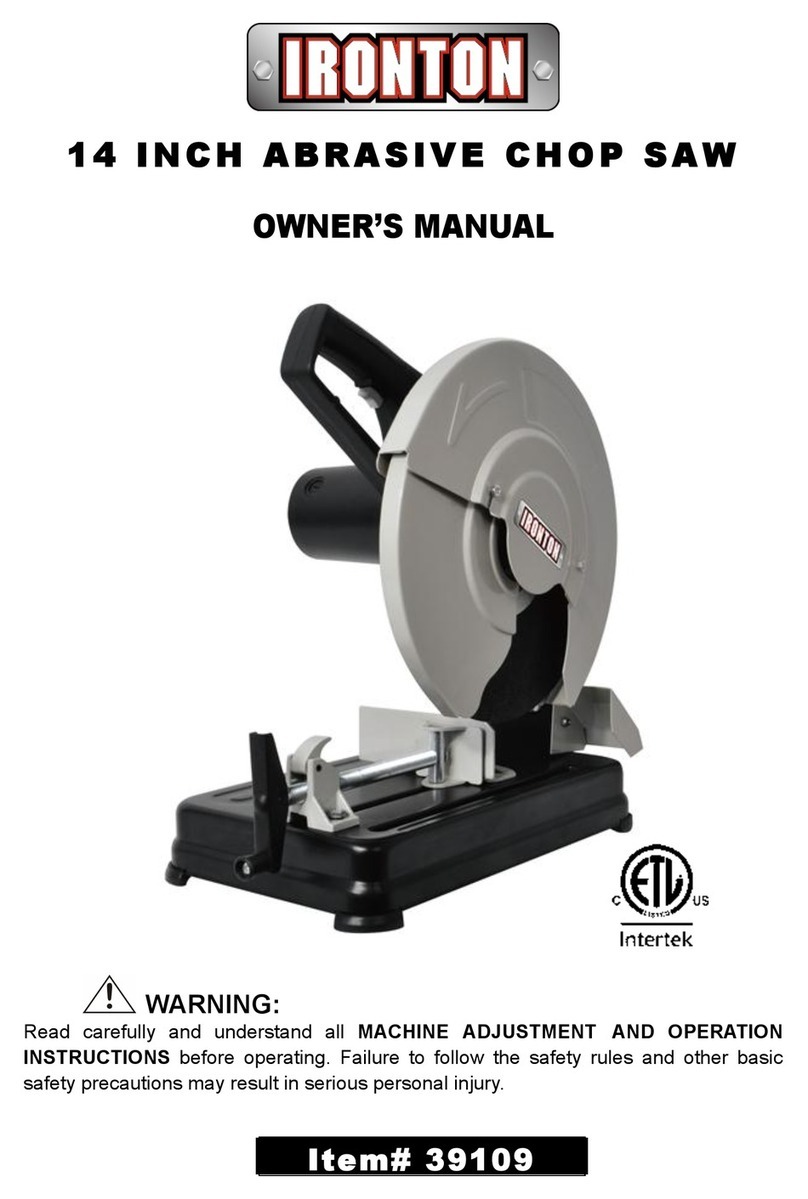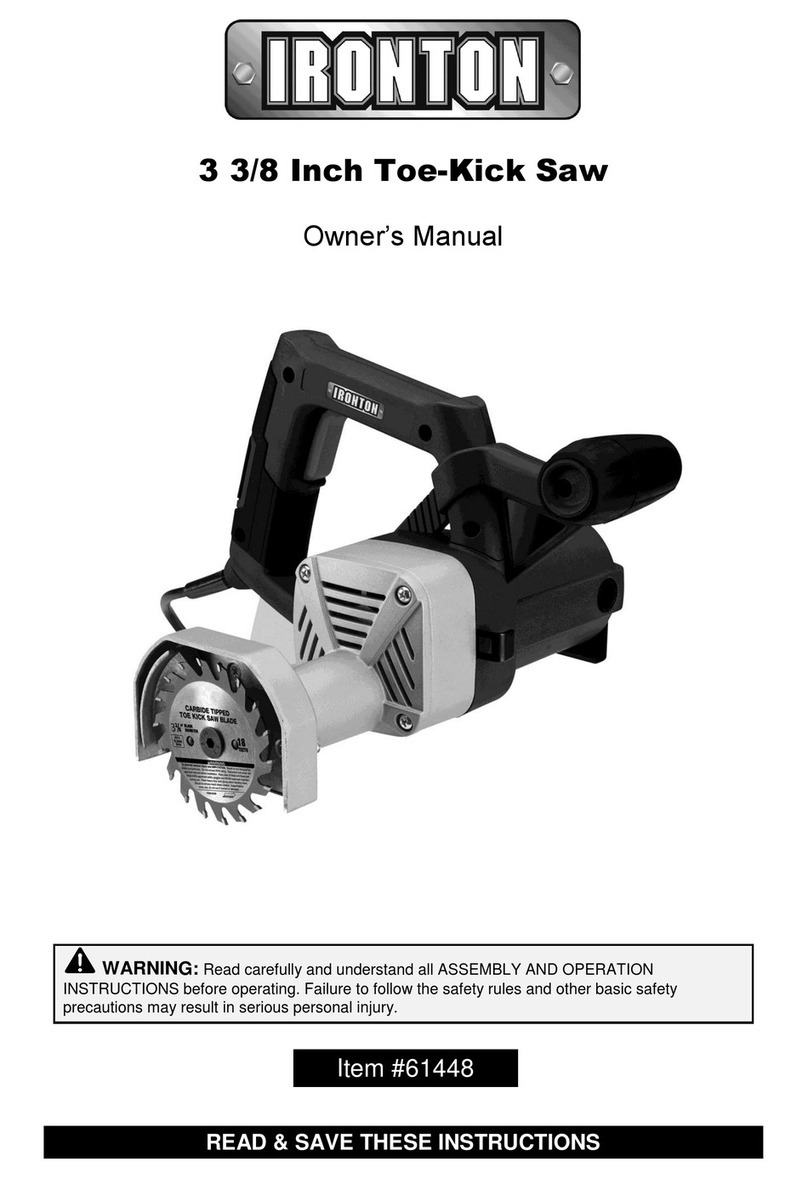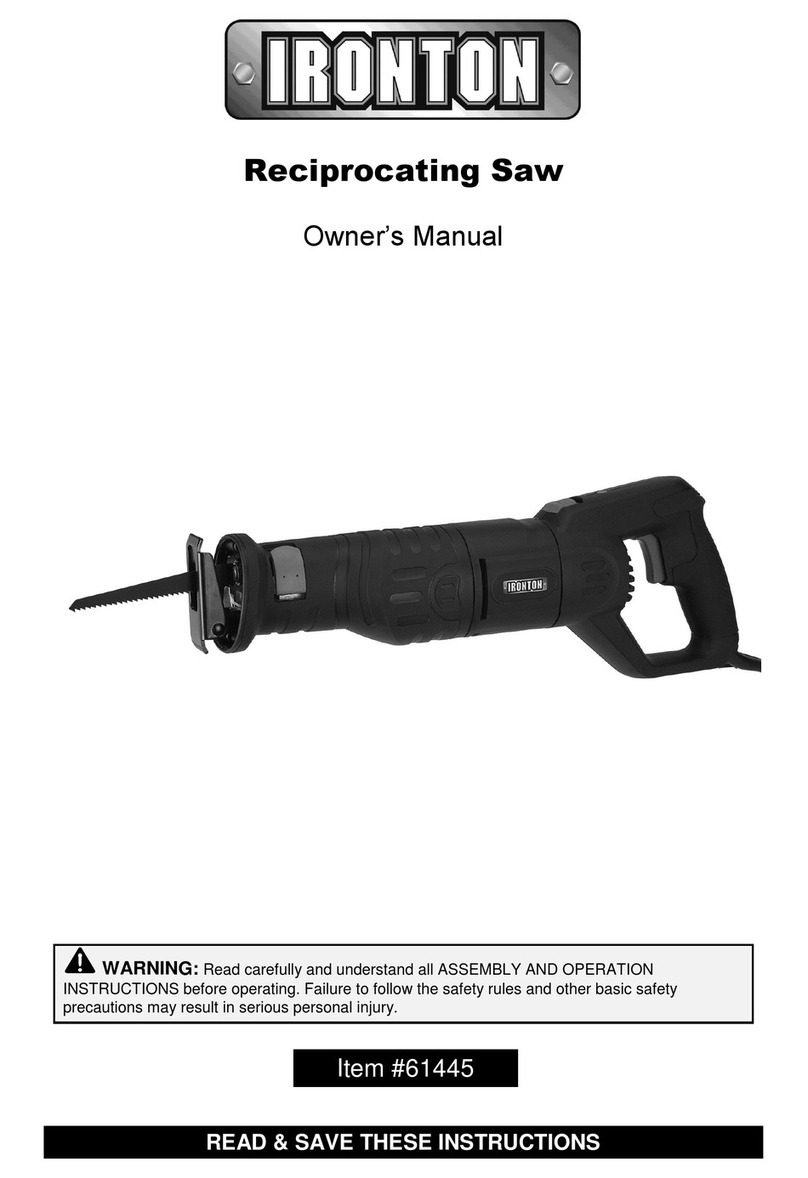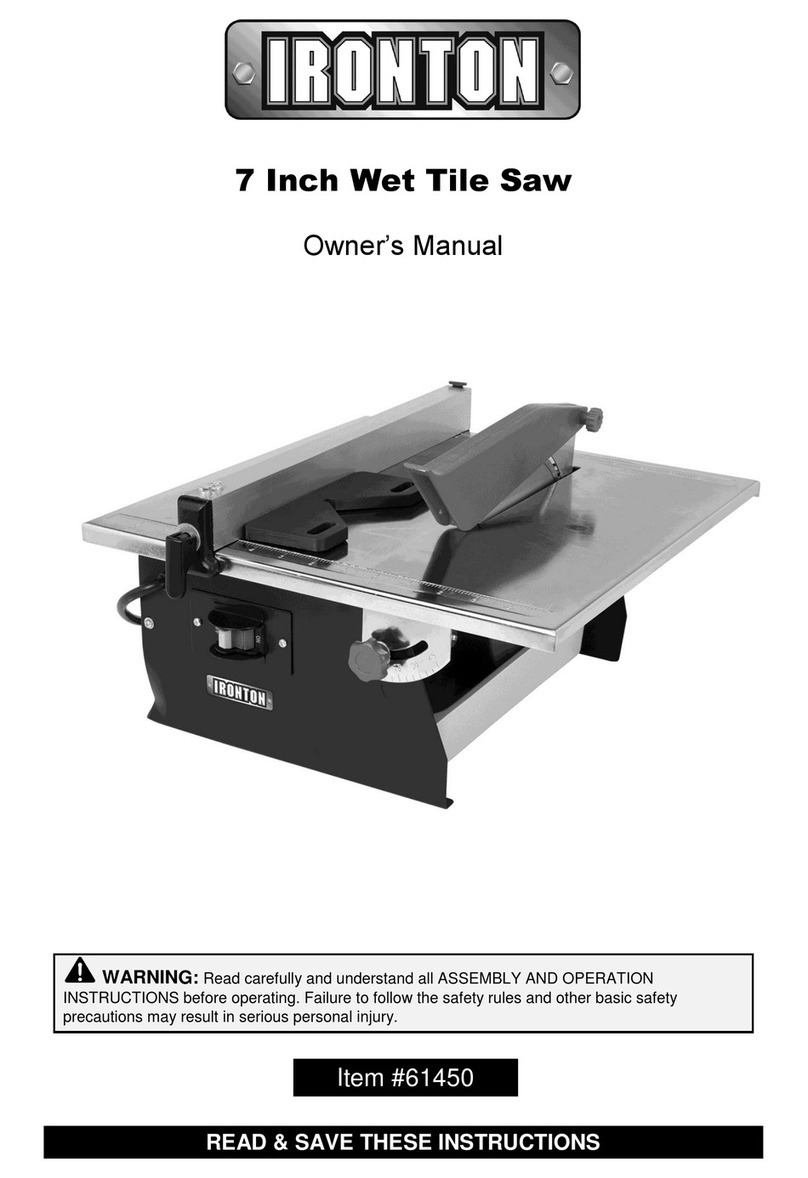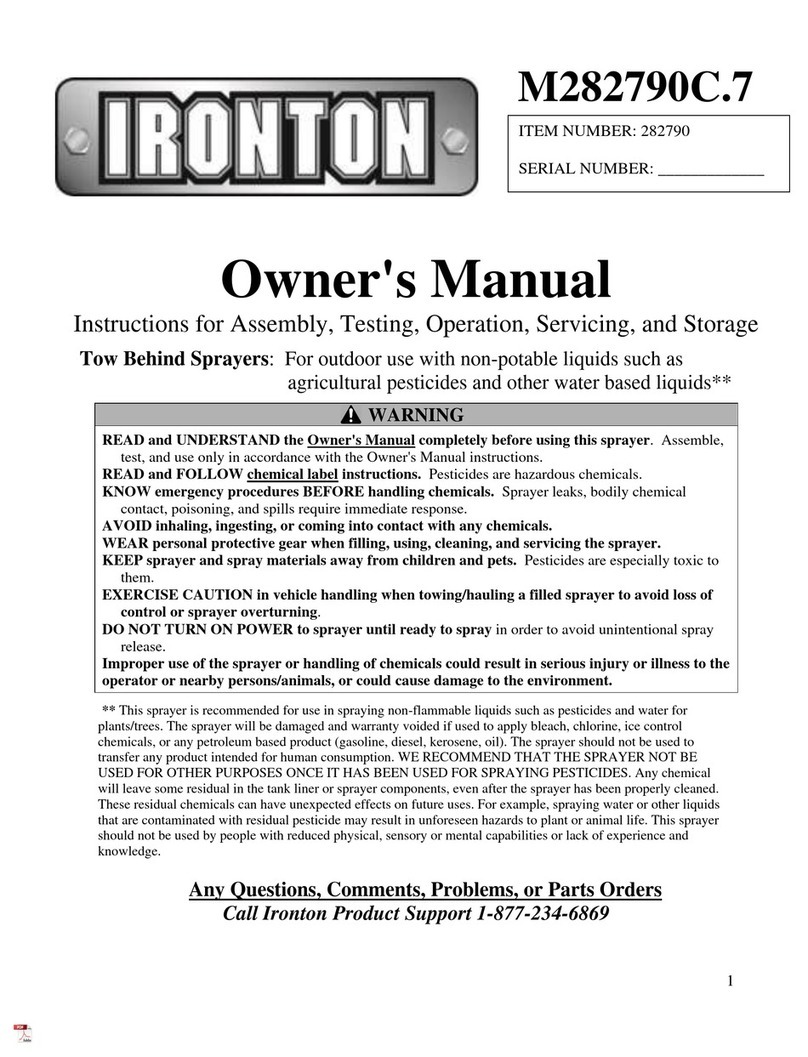Page of 104
operate the tool.
14. DON'T OVERREACH. Keep proper footing and balance at all times.
15. MAINTAIN TOOLS IN TOP CONDITION. Keep tools sharp and clean for best and safest
performance. Follow instructions for lubricating and changing accessories.
16. DISCONNECT TOOLS before servicing and when changing accessories such as blades,
bite cutters, etc.
17. USE RECOMMENDED ACCESSORIES. The use of accessories or attachments not
recommended by the seller may cause hazards or risk of injury.
18. REDUCE THE RISK OF UNINTENTIONAL STARTING. Make sure switch is in "OFF"
position before plugging in power cord.
19. NEVER STAND ON TOOL. Serious injury could occur if the tool is tipped or if the cutting
tool is accidentally contacted.
20. CHECK DAMAGED PARTS. Before further use of the tool, a guard or other part that is
damaged should be carefully checked to ensure that it will operate properly and perform its
intended function. Check for alignment of moving parts, mounting, and any other condition
that may affect its operation. A guard or other part that is damaged should be properly
repaired of replaced.
21. DIRECTION OF FEED. Feed work into a blade or cutter against the direction of rotation of
the blade or cutter only.
22. NEVER LEAVE TOOL RUNNING UNATTENDED. TURN POWER OFF. Don't leave tool
until it comes to a complete stop.
23. DRUGS, ALCOHOL MEDICATION. Do not operate tool while under the influence of drugs,
alcohol or any medication.
24. MAKE SURE TOOL IS DISCONNECTED FROM POWER SUPPLY. While motor is being
mounted, connected or reconnected.
25. WARNING: The fragments generated by certain metal and metal products can be
injurious to your health. Always operate machinery in well-ventilated areas and provide for
proper removal of fragments.
ADDITIONAL SAFETY RULES FOR PORTABLE BAND SAW
•Do not operate your portable band saw until it is completely assembled and installed according
to the instructions.
•If you are not thoroughly familiar with the operation of portable band saws, obtain advice from
your supervisor, instructor or other qualified person.
•Firm grip and proper balance must be maintained during operation.
•The Portable Band Saw cannot be used in wet conditions.
•Make sure blade is properly tensioned before operating saw.
•To avoid blade breakage, always adjust blade tension correctly.
•Make sure the blade turns in correct direction before use.
•Do not cut material that is too small to be safely supported.
•Avoid awkward hand positions where a sudden slip could cause a hand to move into the blade.
•Always keep hands and fingers away from blade
•Do not use dull or bent blades
•Do not attempt to cut material that is not securely fastened or clamped.
•Do not attempt to cut material too fast while cutting.
•Never start the portable band saw with the stock pressed against the blade.
•When cutting a large work-piece make sure the material is in a safe cutting position.

